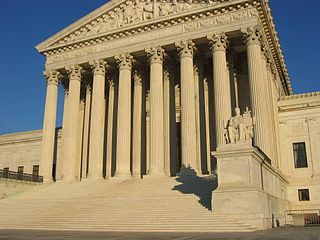
To Whom Does a Child Belong?
The Indian Children Welfare Act, adopted in 1978, was a response to that tragic situation. Under the Act, any Indian child is considered to be under the sovereignty of their tribe, and cannot be adopted out of the tribe without their tribe’s knowledge and consent.
Nina Totenberg’s recent NPR article tells the story of Christy Maldonado, a non-Indian woman who got pregnant with her fiancé, Dusten Brown, a member of the Cherokee nation. The relationship deteriorated and they broke up. Brown told Maldonado that he did not want the child and was willing to terminate his parental rights. Maldonaldo felt that she couldn’t afford to raise the child. “That’s when I pretty much decided I had to do something because I could barely even put food on the table for the kids at that time,” she told Totenberg.
The Nightlight Christian Adoption Agency helped Maldonado arrange for the adoption of the child by a South Carolina couple. The Cherokee nation was duly notified but could not locate Dusten Brownin their records – the agency attorney had misspelled his name and provided the wrong date of birth – and did not intervene. Without legal advice, Brown signed the paperwork presented to him by the agency’s process server four months after the child’s birth and days before his deployment to Iraq.
The South Carolina Supreme Court decision records Brown’s testimony: “Upon realizing that Mother had relinquished her rights to [the adoptive parents], Father testified, “I then tried to grab the paper up. [The process server] told me that I could not grab that [sic] because … I would be going to jail if I was to do any harm to the paper.”3 The next day, Brown consulted a JAG lawyer and filed an objection days later. Based on South Carolina law, that may not have been enough to upset the adoption. But in the mean time, the Cherokee Nation located him on their records and intervened, and the South Carolina court eventually ruled that the Indian Child Welfare Act trumped South Carolina adoption law and procedures. The court awarded custody of the then-two-year-old daughter to her biological father, emotionally devastating the adoptive parents.
The case now in front of the United States Supreme Court is about the interpretation and application of the Indian Child Welfare Act. It is hard to imagine any outcome that is not devastating to somebody, whether it’s the child’s father with whom she has now been living for a year and a half, or her adoptive parents, with whom everyone agrees that she thrived happily.
Arguably this particular situation could have been avoided if the Nightlight Christian Adoption Agency had made certain that the biological father had independent legal advice and had been more scrupulous in its own work and legal filings. Or possibly even if South Carolina provided a stronger social safety net that did not force Maldonaldo to choose between feeding the two children she already had and keeping this third child. The questions here are fraught and difficult. It implicates sensitive questions resonant for the Jewish community which has its own history and cultural context: in the past, Jewish parents forced to make heart-wrenching decisions for their children’s protection, and in the present, American Jewish families being overwhelmingly more likely to be adoptive parents (most often of children not born Jewish) rather than relinquishing parents.
To whom does a child belong? Is it only to her biological parents? Do her people and/or her nation (the Cherokee nation has legal status in the United States) have a claim to jurisdiction over her? Does it matter that her father was ‘only’ 2% Cherokee by blood,4 if he was a full member of the nation? How is and how should authority within a community be exercised? How should the urgent needs of an individual be balanced with the sustenance of a community?
[1] Halakhic Alternatives In IVF-Pregnancies: A Survey, Yitzchok A. Breitowitz, The Jewish Law Annual, Vol. XI, 2003.
[2] Unger, Steven, ed., The Destruction of American Indian Families, New York: Association on American Indian Affairs, 1977, p.1. Totenberg’s NPR article cites 35-40%.
[3] Adoptive Couple v. Baby Girl, 731 SE 2d 550 – SC: Supreme Court 2012
[4] Adoption Case Brings Rare Family Law Dispute To High Court, Nina Totenberg, NPR




One comment on “To Whom Does a Child Belong?”
Comments are closed.